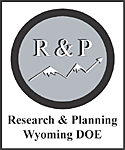Modest Job Growth Continues in January 2011
The Research & Planning section of the Wyoming Department of Employment has reported that total nonfarm employment in the state rose by 3,800 jobs (1.4%) from January 2010 to January 2011. Wyoming's seasonally adjusted1 unemployment rate decreased from 6.4% in December to 6.3% in January 2011 and remained much lower than the U.S. unemployment rate (9.0%).Over the year, Wyoming added 3,800 jobs (1.4%). The largest job gains occurred in natural resources & mining (including oil & gas; 2,100 jobs, or 8.8%), educational & health services (600 jobs, or 2.3%), and government (including public schools, colleges, & hospitals; 500 jobs, or 0.7%).
Employment increased more modestly in professional & business services (400 jobs, or 2.5%), transportation & utilities (400 jobs, or 3.0%), and construction (300 jobs, or 1.5%). Job losses were seen in retail trade (-400 jobs, or -1.4%) and leisure & hospitality (-300 jobs, or -1.0%).
From December to January, total nonfarm employment fell by 7,700 jobs (-2.7%). This level of decrease is consistent with normal seasonal patterns. Large seasonal job losses were seen in construction (-1,900 jobs, or -8.7%), government (including public schools, colleges, & hospitals; -1,900 jobs, or -2.6%), leisure & hospitality (-900 jobs, or -3.0%), retail trade (-800 jobs, or -2.7%), and professional & business services (-600 jobs, or -3.5%). Smaller seasonal job losses occurred in natural resources & mining (-400 jobs, or -1.5%) and educational & health services (-400 jobs, or -1.5%).
Most county unemployment rates followed their normal seasonal pattern and increased from December to January. Lincoln County posted the highest unemployment rate (10.4%) followed by Johnson (9.5%) and Sheridan (9.0%) counties. From January 2010 to January 2011, unemployment rates decreased in every county.
1Seasonal adjustment is a statistical procedure to remove the impact of normal regularly recurring events (such as weather, major holidays, and the opening and closing of schools) from economic time series in order to obtain a better understanding of changes in economic conditions from month to month.
